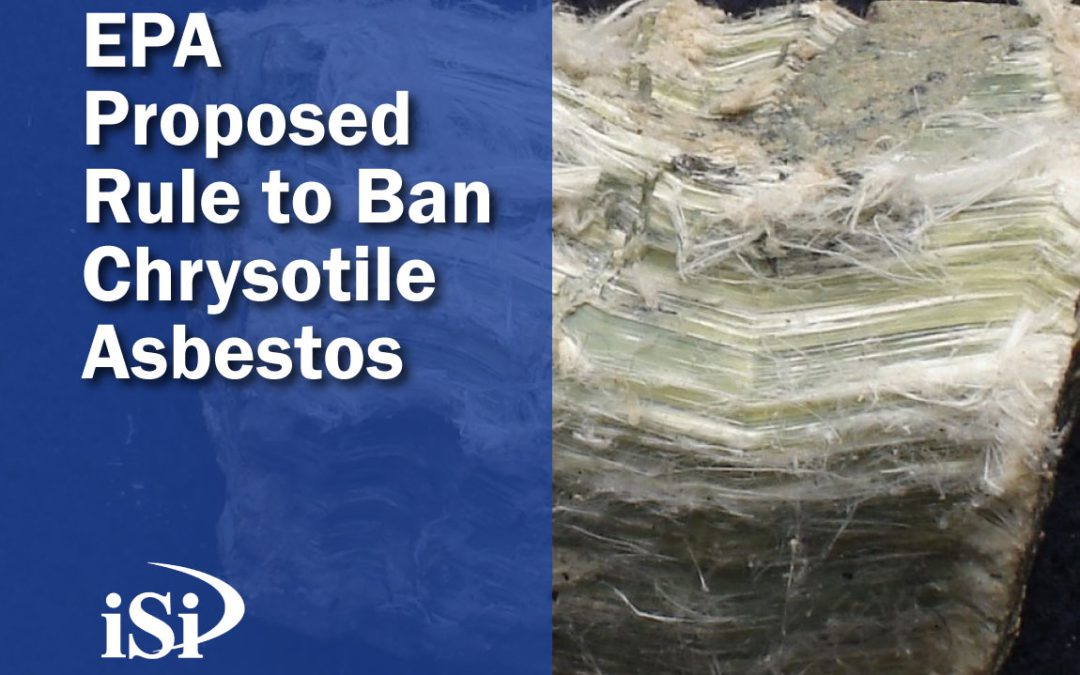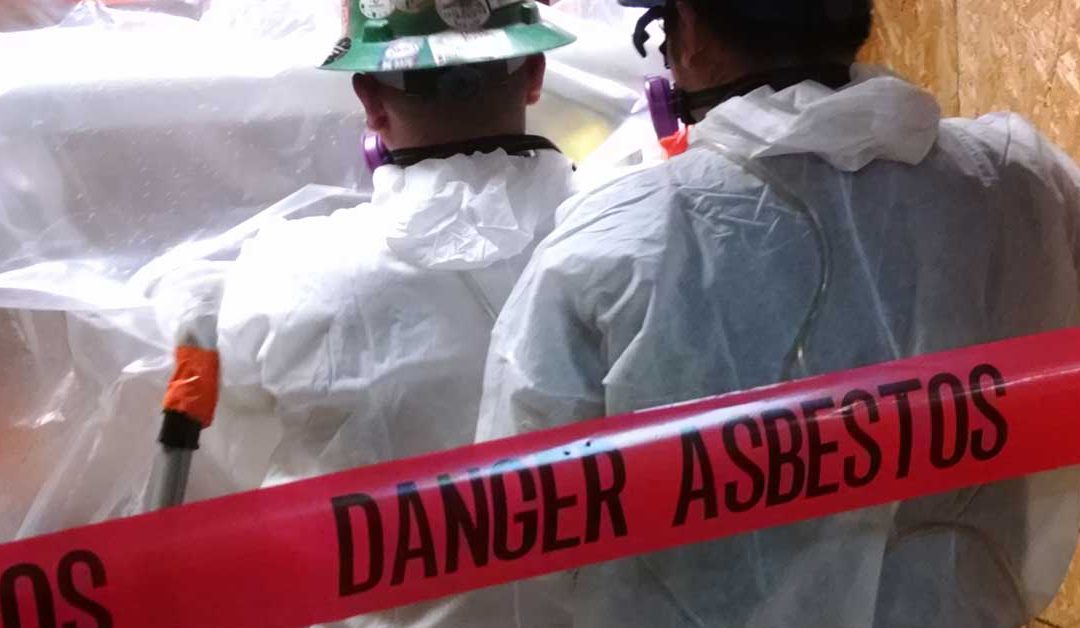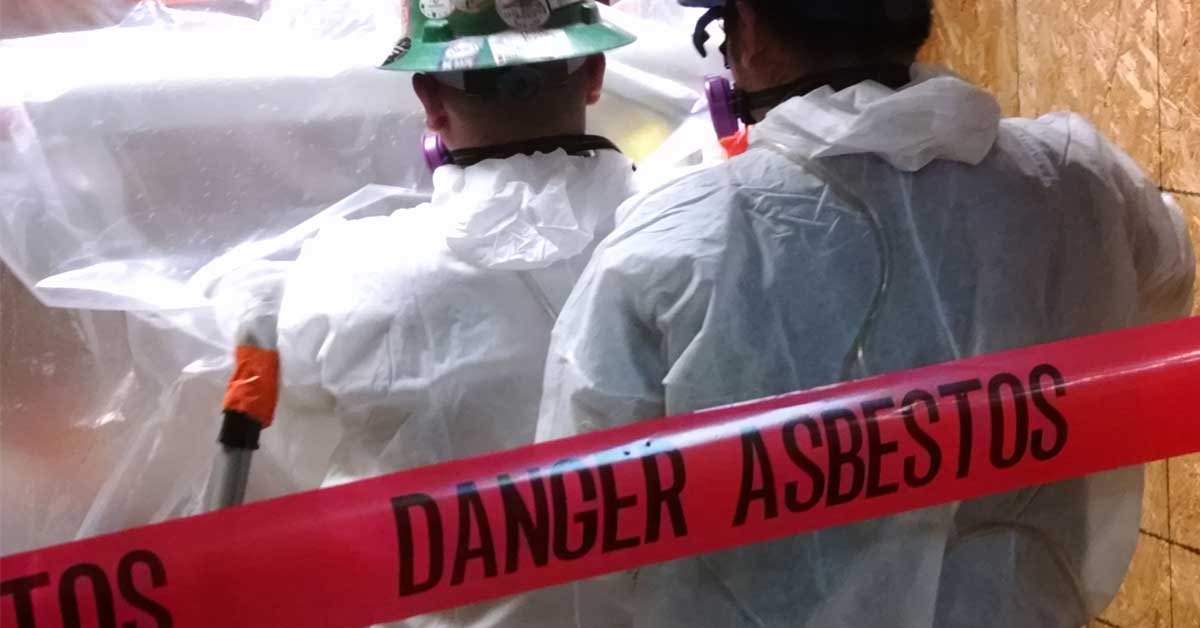
What’s the Difference Between OSHA’s General Industry and Construction Standards on Asbestos?
With so many entities regulating asbestos – EPA to OSHA to State Governments to even City and County Governments – we see a lot of confusion. These regulations cross over and intertwine with each other and it’s sometimes difficult to remember which rule is required by which agency. In this article, we will tackle OSHA’s side.
OSHA has two separate regulations regarding asbestos. The General Industry Standard is at 29 CFR 1910.1001 and the Construction Standard is at 29 CFR 1926.1101. Unlike other regulations that are shared between 1910 and 1926, these are NOT a carbon copy of each other.
Which One is For You? Well….It Depends.
In many standards, a company follows either the standard in 1910 or the standard in 1926 based on what type of facility you are. If you’re a manufacturer, fixed facility, traditionally the 1910 general industry standard applies to you. If you’re a construction company who moves from site to site, the 1926 construction standards typically apply to you. However, for asbestos regulations, the one that applies to you depends on what’s going on at your site and what your workers are doing.
A general rule of thumb is daily management of asbestos at your facility falls under the general industry standards. When you are intentionally disturbing asbestos, then you follow the construction standards. So a “general industry” facility could be subject to both the general industry and the construction standards if they have a renovation going on. It’s important that you know the difference between the two distinctions.
The Similarities
We’ll first take a look at the similarities between the two standards. Remember that OSHA’s goal is the safety of the worker so regulations are focused on worker protection.
Notifying Employees of the Hazards of Asbestos
Both regulations require that you notify workers of the hazards of asbestos and you can do this for everyone through your compliance activities for the hazard communication standard or you can do it through separate training. This includes informing workers of the presence and location of asbestos in their workplace as well as the health hazards caused by asbestos. Housekeeping personnel are required to be notified of asbestos-containing areas they could be cleaning. Outside contractors and project bidders who could work in areas where asbestos could be disturbed are required to be notified where it is. If asbestos is to be disturbed, such as a removal projects for a renovation, those people working in areas adjacent to those work areas are to be notified of the project. Tenants of buildings are required to be notified by the owner of the building.
Signage/Labels
Warning signs are to be posted on regulated areas where removal is being conducted or asbestos is being disturbed.
Warning labels should be on raw materials, mixtures, scrap, waste, debris, bagged protective clothing, and other products containing asbestos fibers, or be placed on their containers. Entrances to mechanical rooms or mechanical areas where employees could be exposed should have labels attached where they will clearly be noticed by employees.
Exposure Limits and Medical Surveillance
Each standard sets limits for the amount of asbestos a worker can be exposed to. If there’s the potential that a worker will be exposed past the limits in the standards, then respiratory protection is required and certain PPE is as well. If that limit is exceeded, then the worker also needs to be placed in a medical surveillance program to monitor the health effects of their potential exposure.
Training
Each standard lines out required training. The level of training required depends on what the worker will be doing and whether or not they’ll be disturbing asbestos. Training could range from an awareness class to a full week of intense training. Most asbestos training is required to be repeated annually.
The Differences
General industry standards have a section on suggested work practices for housekeeping personnel to follow, but the construction industry standard dives into detailed work practices for those personnel intentionally disturbing asbestos-containing materials to follow.
In the construction standard is where we find the terms Class I, Class II, Class III and Class IV work. The specific practices that workers are to follow are spelled out in detail for each class of work.
Class I work is for workers at the highest risk of exposure. These are the one who will be removing friable asbestos materials. Friable asbestos materials are those that when dry, can be easily crumbled or pulverized to powder by hand, making the potential for its fibers to be released even greater. Class I work is the large-scale abatements of thermal systems insulation from pipes, boilers, tanks and ducts as well as removal of sprayed-on insulation, “popcorn ceiling” texture or acoustical plaster and vinyl floor covering. This work requires specialized asbestos removal/abatement training of up to 40 hours with annual refreshers.
Class II work is the removal of non-friable asbestos. Non-friable asbestos cannot be easily crumbled or pulverized to powder by hand and its asbestos fibers are usually bonded into other materials. If a non-friable material remains in good condition, it poses little hazard. Because of its strength, incidental contact will not usually release a fiber. Class II work includes removal of vinyl asbestos floor tile, lay-in ceiling tile, Transite roofing panels, window glazing, asbestos siding and any non-friable materials. This work requires specialized asbestos removal training that can vary from full 40 hour courses to specialized training for the specific material to be removed.
Class III work is the intentional disturbing of asbestos for repair and maintenance of other items. For instance, if one needed to cut away a small amount of asbestos to fix a leaky pipe or to potentially disturb some asbestos in order to access an electrical panel for repair, that would fall under this class of work. This type of work can often be done by in-house maintenance personnel or even maintenance contractors. However, it’s still an intentional disturbance and so the workers who do these activities are required to take specialized asbestos removal training as well. Class III work only allows workers to remove a certain quantity of material before it crosses the line and become Class I or II abatement work. Specialized training to remove these small quantities is required, typically a 16-hour initial class with annual refresher training.
Class IV work is for those who will be conducting maintenance and custodial activities after a removal is completed, that is, cleaning up after Class I, II or III work. This level has its own specific training requirements with specific content requirements.
Questions?
Asbestos regulations can be hard to interpret and confusing as actually 4 entities can get involved in regulating it: EPA, OSHA, State Governments and City/County Governments. If you have any questions regarding this article or asbestos in general, contact us.
Need Help?
Need an extra hand to get your safety issues covered? How about policies/programs developed or training conducted?



